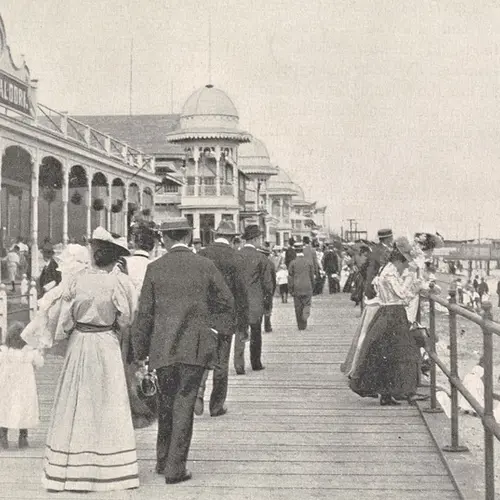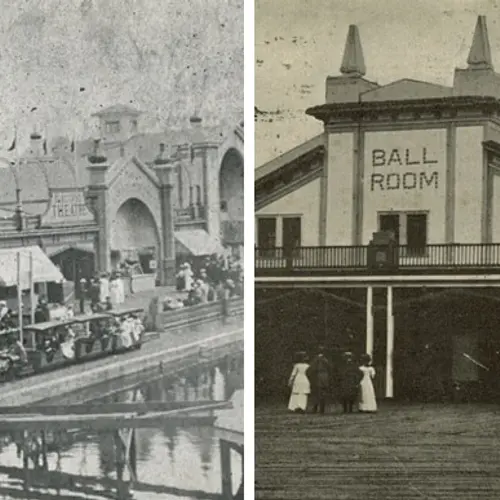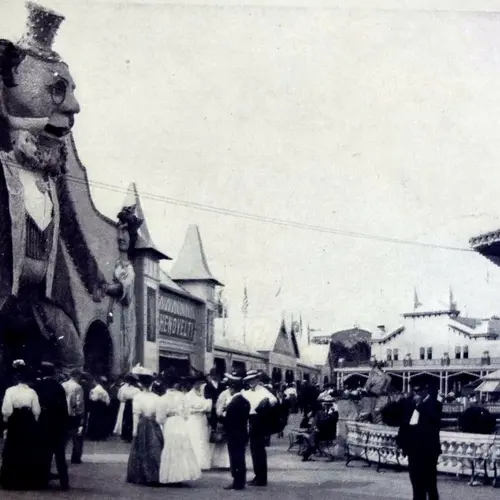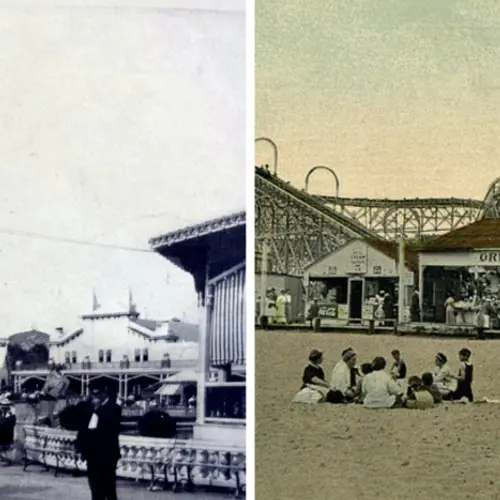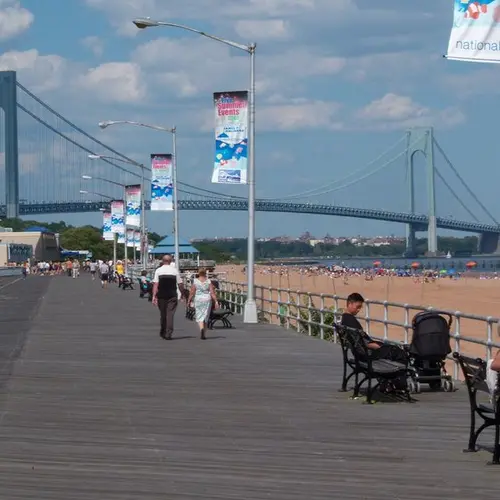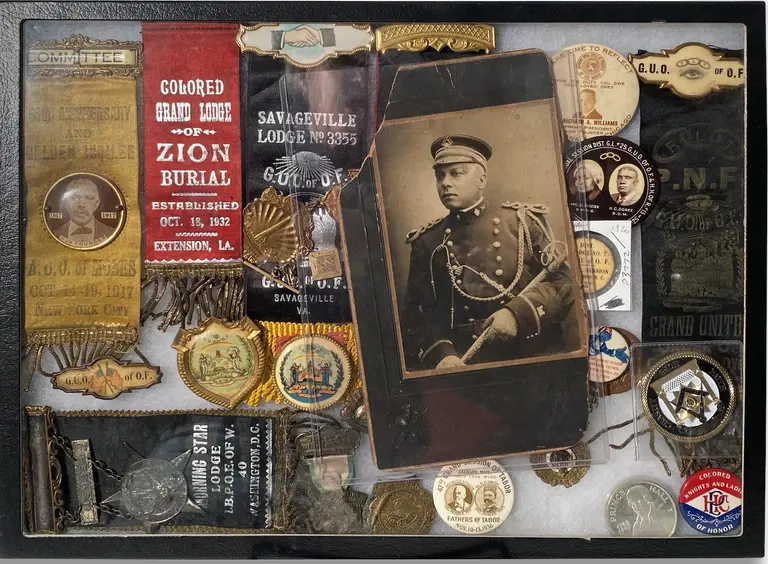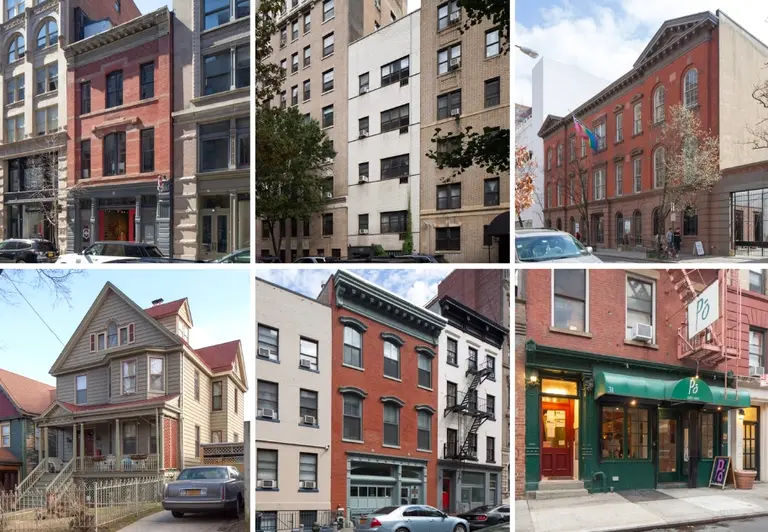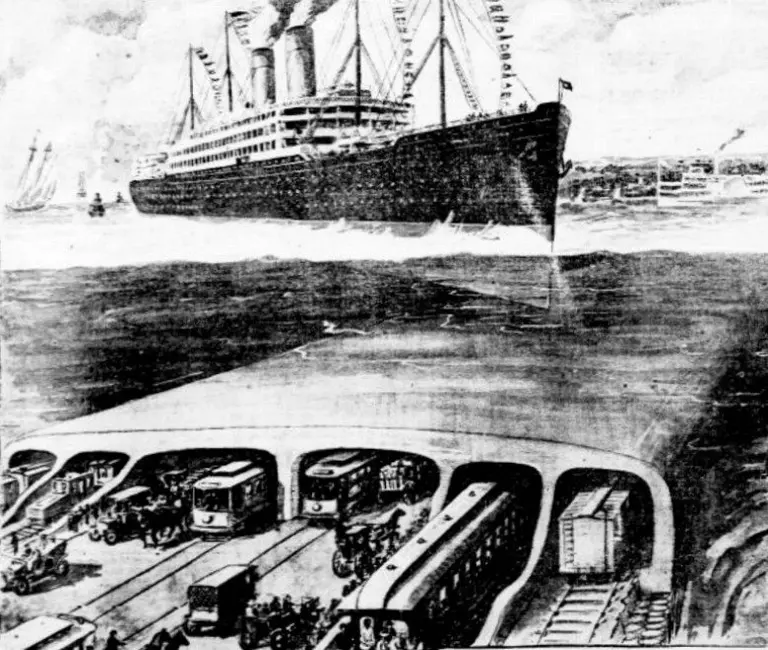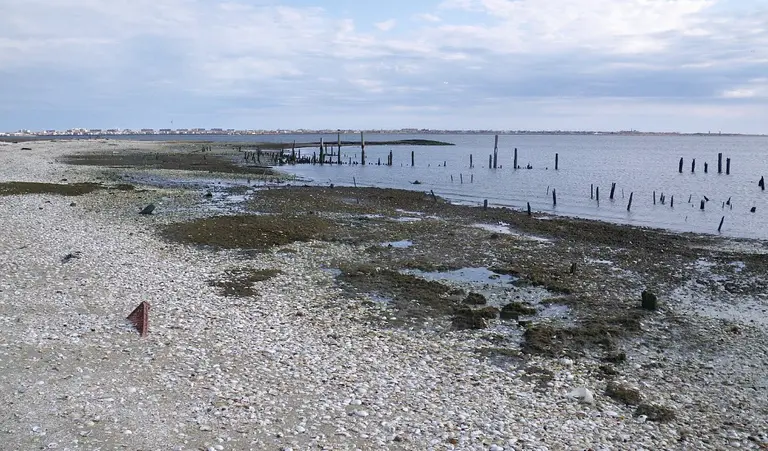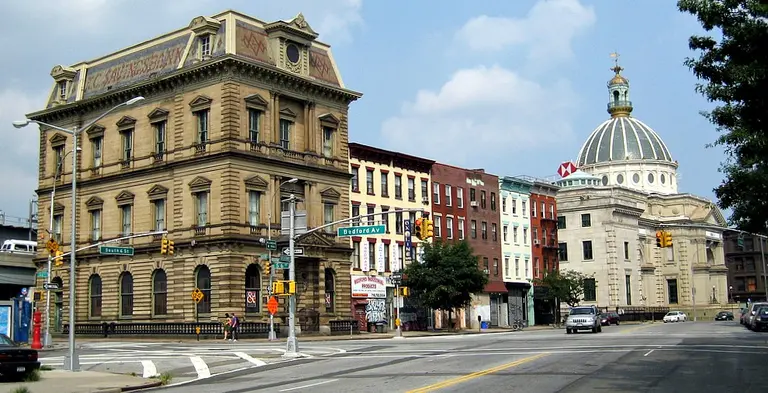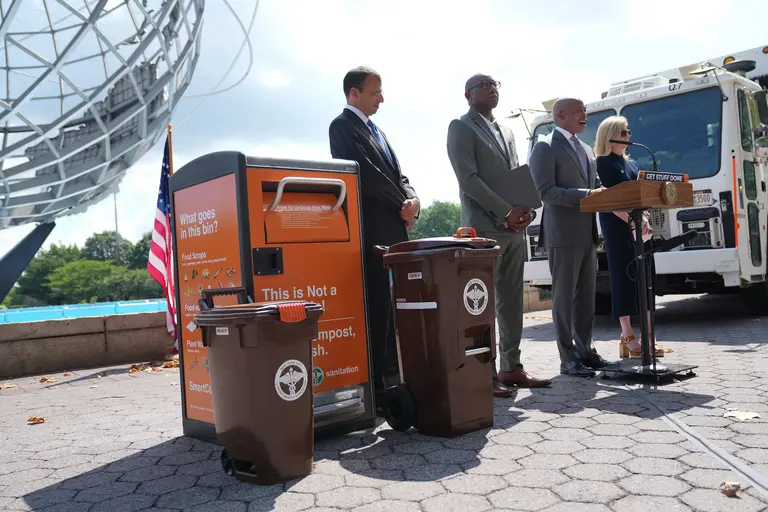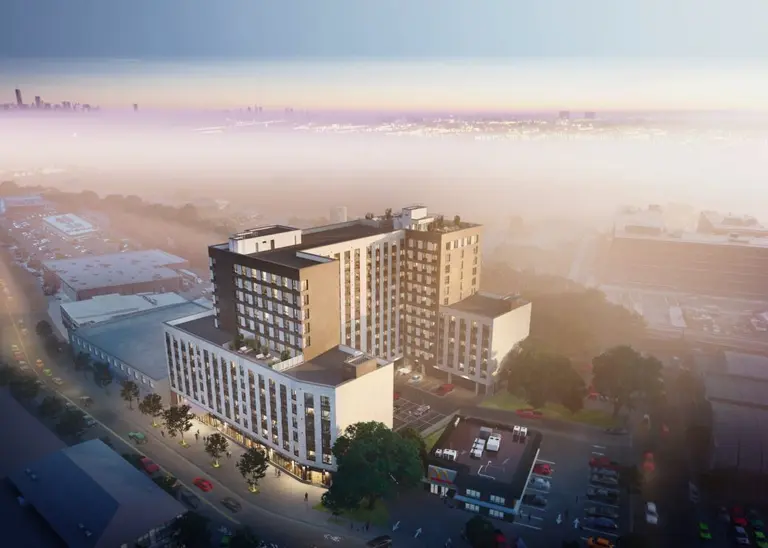Uncovering the Past of Staten Island’s South Beach
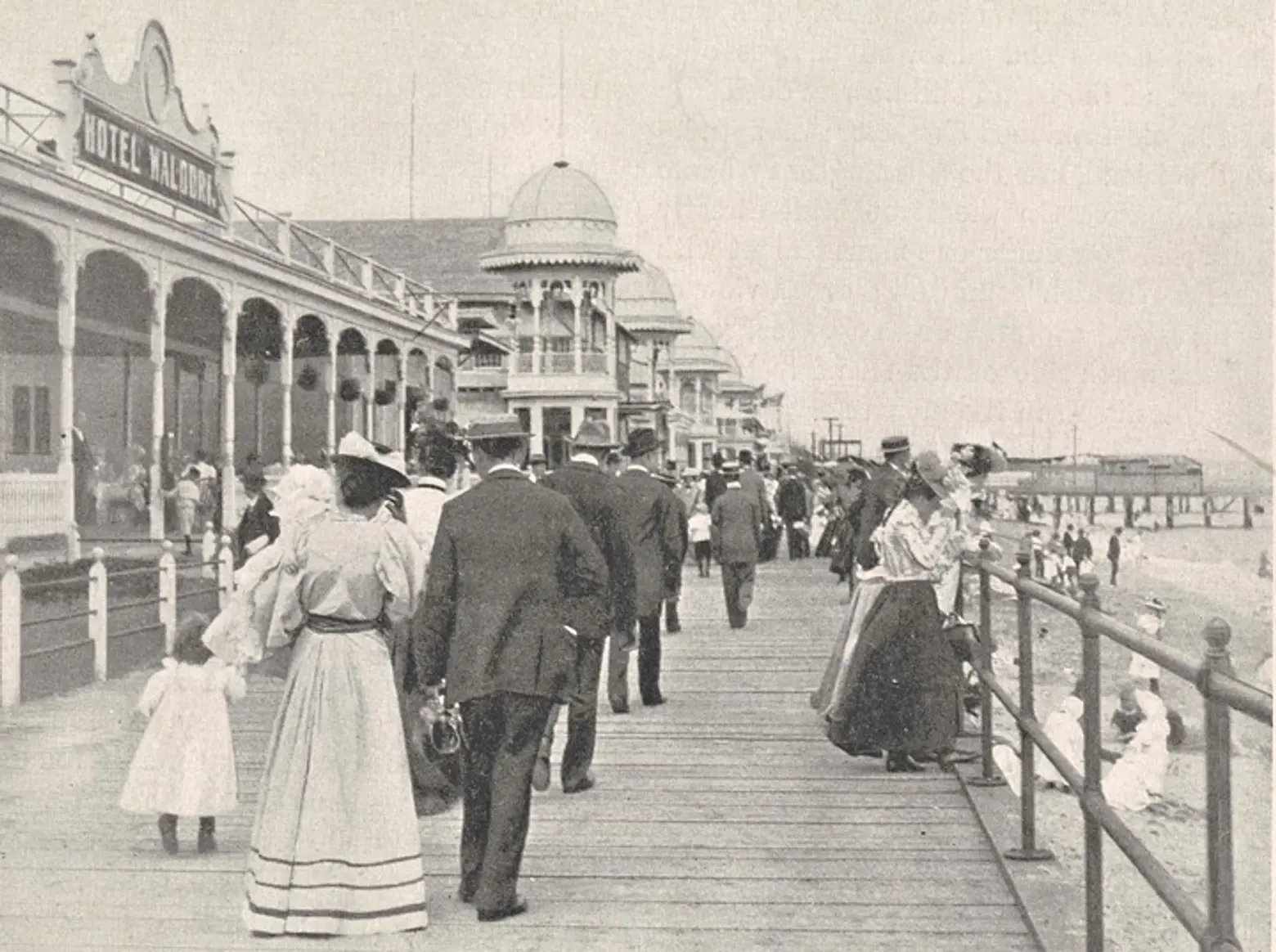
South Beach in 1899 © NYPL Digital Gallery
6sqft recently brought you the history of Bowery Bay Beach, once referred to as the “Coney Island of Queens.” But over on Staten Island, there was another amusement destination that rivaled its Brooklyn counterpart.
South Beach is a waterfront community on the eastern shore behind the Verrazano-Narrows Bridge. The hidden gem is currently an up-and-coming neighborhood for families, with an array of small businesses, ethnic restaurants, and quaint streets. And in the summer months, the two-mile stretch of beaches comes alive. But aside from its current livability, South Beach has a rich history. In the early 20th century, the neighborhood was full of summer bungalows thanks to a beachfront lined with amusements, theaters, arcade games, and rides. Families came from Manhattan, Sandy Hook, and elsewhere to enjoy the festive resort community and the Franklin D. Roosevelt Boardwalk, known as the “Riviera of New York City.”
Along with neighboring Midland Beach, South Beach was originally part of a small Dutch settlement in the mid 17th century. By the end of the 19th century, investors and developers realized the potential of the beachfront town and began building the shoreline up with hotels, bathing pavilions, beer gardens, theaters, casinos, and carousels.
Before long, New Yorkers from all over the city were flocking to this seaside retreat. Travel was easy, thanks to the Staten Island ferry from Manhattan and the various New Jersey ferries. South Beach was also the terminus of a Staten Island Railway line, which operated until 1953. Italian-American immigrants made up a large part of South Beach’s population at this time.
 L: Happyland entrance and the Electric Theatre © NYPL Digital Gallery; R: Ballroom entrance and concession stand © NYPL Digital Gallery
L: Happyland entrance and the Electric Theatre © NYPL Digital Gallery; R: Ballroom entrance and concession stand © NYPL Digital Gallery
In 1906, the 15-acre Happyland Amusement Park opened at the South Beach boardwalk. Since most Broadway theaters closed in the summer, Happyland filled this gap with stage productions and Vaudeville shows, attracting 30,000 visitors on opening day. Fire and animal shows were also popular entertainment acts. Other amusements included the Japanese Tea Gardens, Canals of Venice, a skating rink, and the shooting gallery.
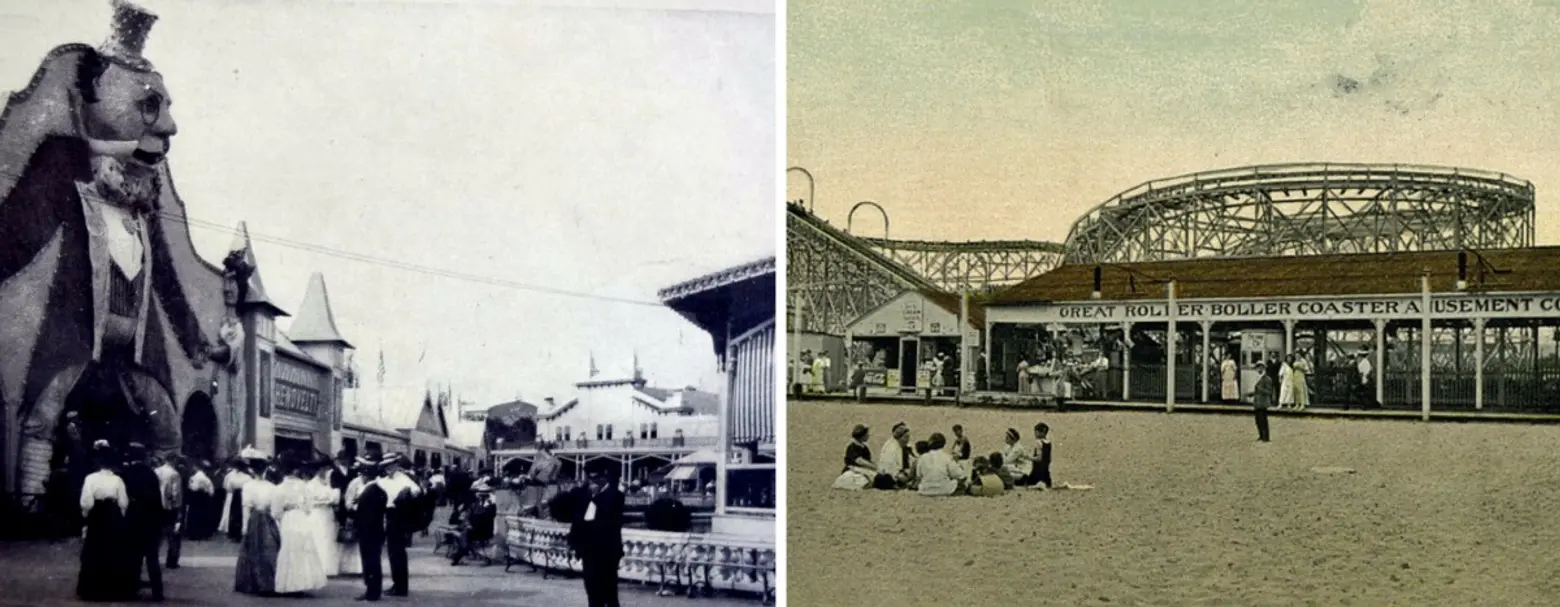 L: Happyland fun house © Staten Island History; R: Roller Boller Coaster © NYPL Digital Gallery
L: Happyland fun house © Staten Island History; R: Roller Boller Coaster © NYPL Digital Gallery
The South Beach shore thrived through the 1920s, but the Great Depression, along with fires and water pollution, eventually got the best of the community and it became quite deserted. In 1935, the Works Progress Administration replaced the existing boardwalk with the Franklin Delano Roosevelt Boardwalk. The two-and-a-half-mile structure was built as part of a park that stretches from the Verrazano-Narrows Bridge to Miller Field.
Today, in addition to flourishing as a beach community, South Beach boasts numerous sports fields, playgrounds, and a year-round fishing pier. The Fountain of the Dolphins sculpture by Steven Dickey is another popular attraction. Erected in 1998, it’s made of six bronze dolphins surrounded by wave-shaped rails. Though the neighborhood was hit hard by Hurricane Sandy, it has bounced back and is just as vibrant as it was 100 years ago.
RELATED:
